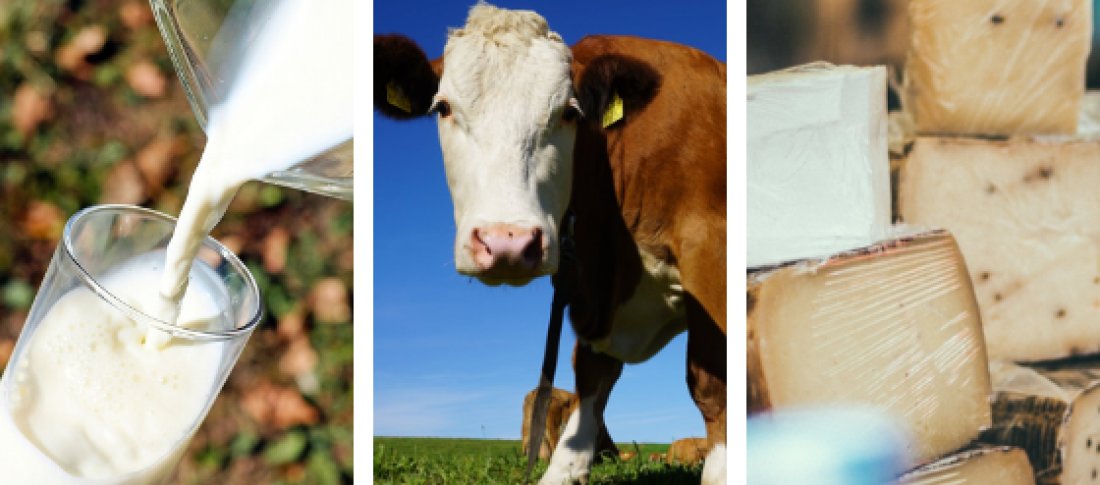As 2020 races out of the starting blocks, we look back at some of the highlights of the UK dairy industry in 2019. And there’s plenty to be excited about.
Dairy farming is a busy profession. You could be forgiven for being pushed for time to sit down and take stock of how your business – and the industry as a whole – is developing. So, here’s a quick recap on some of the most positive trends, changes and developments from the UK dairy farming sector in 2019.
1. Dairy farming continues to generate good income
Challenging weather conditions and an increase in operational costs – such as feed and machinery – contributed to a decrease in income for dairy farmers in 2019. However, Defra revealed that the dairy industry is maintaining its strong performance. The Dairy sector continues to have the highest average farm business income out of the livestock sectors outside of poultry.
2. British consumers love cheese
We are a nation of cheese lovers – and the increase in sales proves it. Yet while cheddar remains a staple, British consumers have a growing appetite for more continental style cheeses. So, it’s good news that there are now more than 700 types of cheese made in Britain – that’s more than France and Switzerland combined.
3. Japanese cheese imports reach record levels
The UK isn’t the only nation with a fondness for fromage. Year-on-year cheese exports from the UK were up in 2019, led by mozzarella and cheddar. The majority of these exports were bound for the EU. Yet one country that has developed a particular penchant for cheese is Japan, where imports soared to record levels in 2019. The UK’s share of Japanese imports doubled between 2017 and 2019, yet still makes up just 1% of Japan’s total cheese imports. It’s a huge opportunity for UK dairy farmers.
4. Growth in global butter exports
The UK’s butter exports to countries outside the EU also saw strong growth in 2019 with China and Canada being favoured buyers.
5. Continued growth in production volumes
Given the hunger for British dairy produce – both at home and abroad – it’s no surprise that production volumes were up in 2019. Milk output rose by 7% (along with a 2% rise in milk price) to prove that dairy farmers as a whole are producing more milk than ever before.
6. Breeding decisions became easier than ever before
These decisions meant greater milk production, increased fertility, and a host of other benefits. Better understanding of herd genomics has had a huge impact to dairy farmers across the UK. In fact, the aggregate economic benefit of the genetic gain between 1980 and 2010 is estimated to be between £2.2 billion and £2.4 billion. And in 2019, it became easier than ever before for dairy farmers to make breeding decisions for their herd. New online tools are making it simple to select bulls based on herd requirements and also accurately gauge optimum semen order volumes.
7. Increase in weekly earnings for farm workers
Treating your herd correctly is a core element of dairy farming. But a successful dairy farming business must respect its staff too. That’s why it’s good news that in 2019 average weekly earnings for farm workers continued a steady upward trend with pay hitting £408 per week.
What does 2020 have in store?
Amendments to the Agricultural Bill and Environmental Bill will demand that dairy farmers be aware of impending changes to Direct Payments, which are to be phased out over the next seven years. There are also calls for more clarity in the supply chain and pressure on farmers to decrease ammonia emissions.
An increased awareness of sustainable farming practices together with the sustainability credentials of fed ingredients, is anticipated to feature heavily in 2020
At the commercial level, we may see more dairy farmers branding their produce as they push to differentiate their product and push for higher margins. Meanwhile, beyond the UK, global desire for dairy is set to continue. Between 2019 and 2028, the global consumption of fresh dairy produce is expected to increase by 2.1%, while consumption of processed dairy products is expected to grow by 1.5%.
That spells big opportunities for UK dairy farmers and we are right here to help you realise them. Happy New Year from all of us at Megalac.
